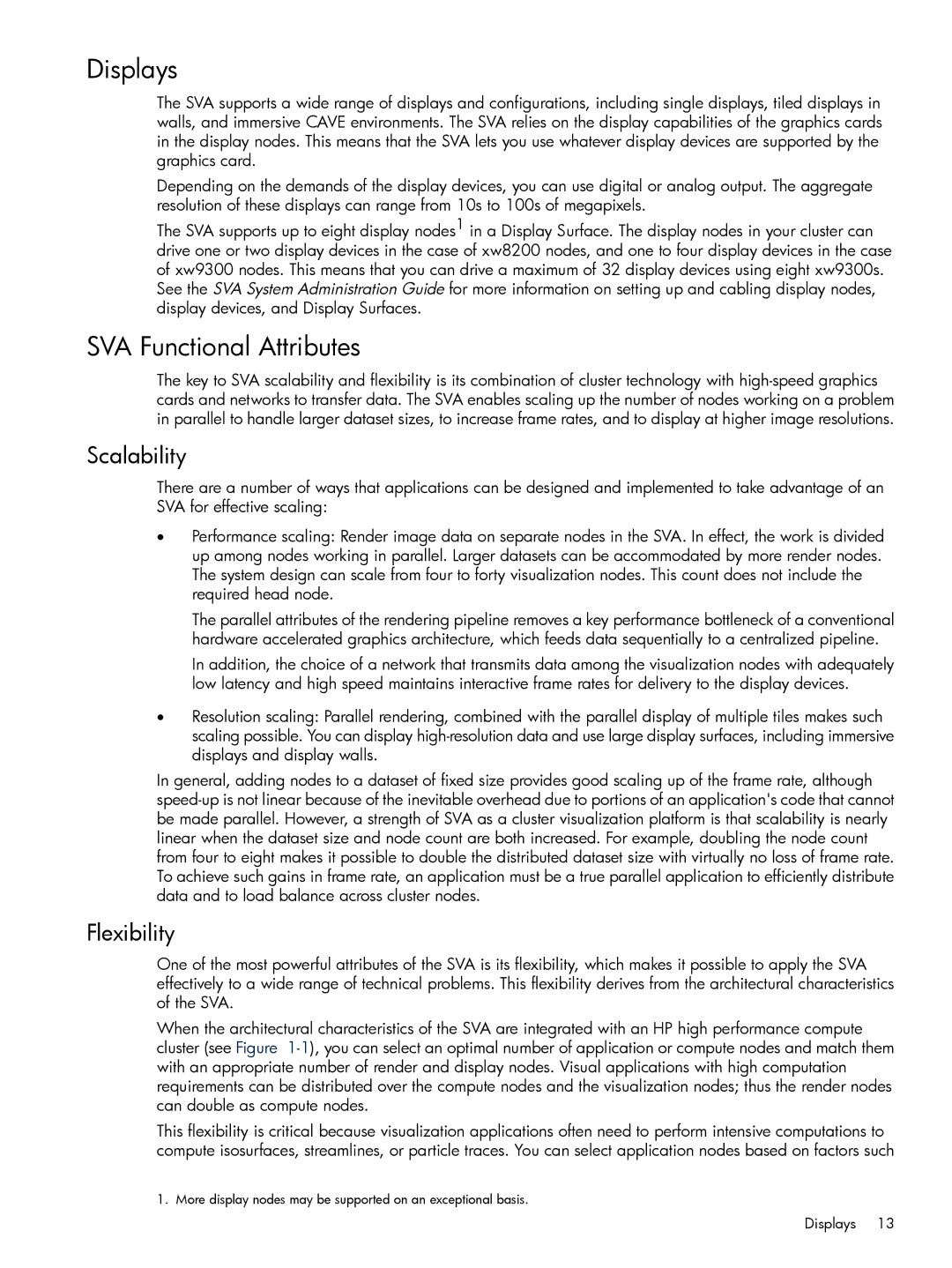Displays
The SVA supports a wide range of displays and configurations, including single displays, tiled displays in walls, and immersive CAVE environments. The SVA relies on the display capabilities of the graphics cards in the display nodes. This means that the SVA lets you use whatever display devices are supported by the graphics card.
Depending on the demands of the display devices, you can use digital or analog output. The aggregate resolution of these displays can range from 10s to 100s of megapixels.
The SVA supports up to eight display nodes1 in a Display Surface. The display nodes in your cluster can drive one or two display devices in the case of xw8200 nodes, and one to four display devices in the case of xw9300 nodes. This means that you can drive a maximum of 32 display devices using eight xw9300s. See the SVA System Administration Guide for more information on setting up and cabling display nodes, display devices, and Display Surfaces.
SVA Functional Attributes
The key to SVA scalability and flexibility is its combination of cluster technology with
Scalability
There are a number of ways that applications can be designed and implemented to take advantage of an SVA for effective scaling:
•Performance scaling: Render image data on separate nodes in the SVA. In effect, the work is divided up among nodes working in parallel. Larger datasets can be accommodated by more render nodes. The system design can scale from four to forty visualization nodes. This count does not include the required head node.
The parallel attributes of the rendering pipeline removes a key performance bottleneck of a conventional hardware accelerated graphics architecture, which feeds data sequentially to a centralized pipeline.
In addition, the choice of a network that transmits data among the visualization nodes with adequately low latency and high speed maintains interactive frame rates for delivery to the display devices.
•Resolution scaling: Parallel rendering, combined with the parallel display of multiple tiles makes such scaling possible. You can display
In general, adding nodes to a dataset of fixed size provides good scaling up of the frame rate, although
Flexibility
One of the most powerful attributes of the SVA is its flexibility, which makes it possible to apply the SVA effectively to a wide range of technical problems. This flexibility derives from the architectural characteristics of the SVA.
When the architectural characteristics of the SVA are integrated with an HP high performance compute cluster (see Figure
This flexibility is critical because visualization applications often need to perform intensive computations to compute isosurfaces, streamlines, or particle traces. You can select application nodes based on factors such
1. More display nodes may be supported on an exceptional basis.
Displays 13
